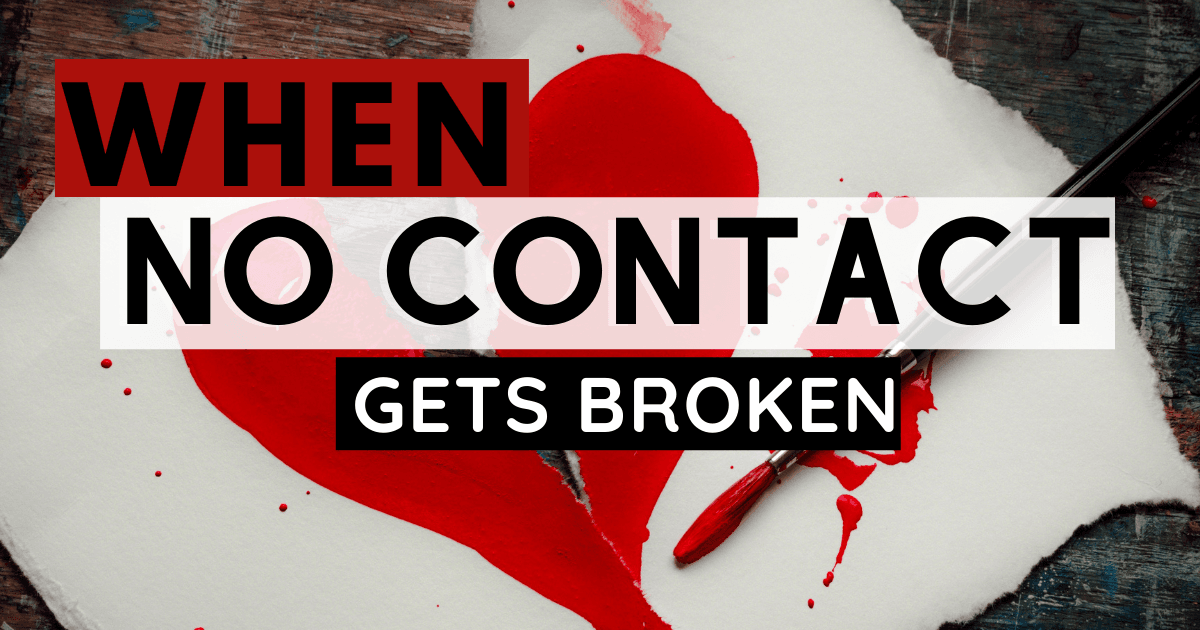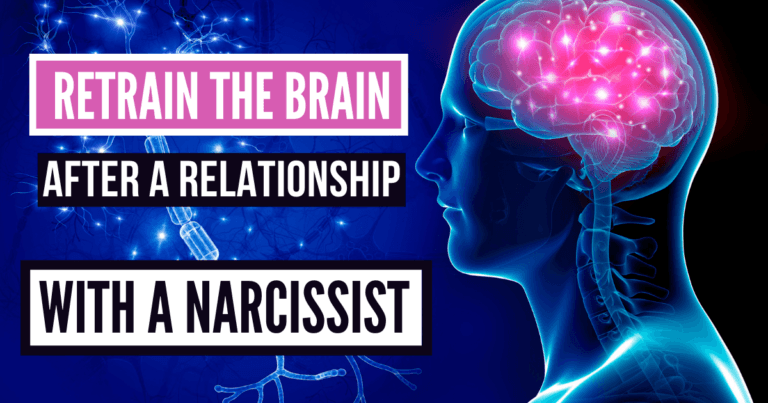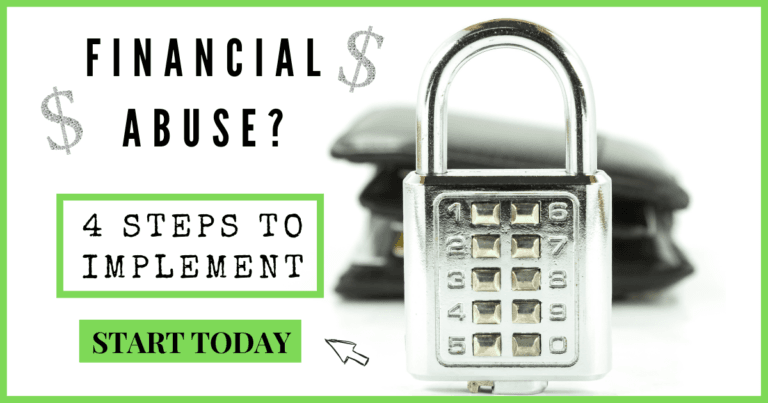WHY No Contact Is Broken | Understanding The Trauma Bond
The Relationship Bond that Acts Like Glue
Establishing no contact after a relationship with a narcissist is a brave step and is a move in the right direction but it does not come without challenges.
It has been estimated that a victim of domestic violence (DV) tries to leave their abuser seven times before cutting the tie for good.
In this article we are going to explore some of the common reasons a victim returns to their partner (when contact is broke) and conclude with some options to consider if you find yourself in this scenario.
Table of Contents
Watch the Video!
Listen to the Podcast Episode
No Contact is Challenging
Going no contact with a narcissist may be a challenging endeavor to accomplish, depending on your circumstances. It’s a choice that does not come lightly and is usually surfaced from:
(1) professionals that recommend to go no contact,
(2) personal survivors who have endured and who also recommend,
(3) knowledge of the subject and seeing the big picture/large scale of the implications for remaining.
No contact is typically a well-thought-out decision and often comes as a result from learning that a narcissist does not change, however, many victims return, no contact is broke, and it could be due one or more of the following reasons. Let’s explore.
1. Trauma Bond
2. Ongoing Manipulation
3. Second-Guessing Yourself

Were you the Family Scapegoat?
A similar occurrence occurs with the scapegoat. When the scapegoat is overlooked, criticized, and treated as less than others over and over again by not only caretakers, they can begin to internalize how others treat them over and over again. They can take on self-sabotaging behaviors and may suffer from poor or improper self-esteem. Learn about the dynamics between the Scapegoat and the Golden child, why he relationship is strained, what the Scapegoat can do, why the scapegoat is disrespected (and worse), and even ostracized.
The Trauma Bond
A bond, simply put, is an emotional attachment. When in a relationship with a narcissist, a certain type of bond is formed, a trauma bond. This trauma bond is formed as the relationship goes through the characteristic cyclical stages of abuse over and over again.
The stages are idealize, devalue and discard – and it’s trauma inducing. When in a relationship with a narcissist, there are high high’s during the love-bombing stage, and then in the blink of an eye, an event can turn into a traumatic event (and it often does).
The shift in events can come out of “nowhere” and there is where the trauma bond is formed. The trauma bond is an emotional attachment that forms with the narcissist/toxic individual during a traumatic event(s) and this bond acts like a glue or a magnet and keeps the relationship intact often longer than it should.
As a series of events transpire over and over again with a narcissist, the pattern is repeated and at each occurrence, a trauma can occur, and the trauma bond is reinforced. This trauma bond after time can become addictive as the relationship becomes built on these high highs and unexpected events.
Because this trauma bond has been formed and exists, this is why many victims in a relationship with a narcissist return. They return (even if for a short time) because there is still an emotional attachment.
The trauma bond is one of the most challenging aspects in the healing aspect after leaving the narcissist to overcome. This bond must be broken to be truly free. Read more on the cycle of abuse here.
Continued Manipulation
A narcissist operates under the guise of manipulation, and it can be so covert during the relationship and even after no contact has been made. When a victim leaves, there is a series of events which usually transpire historically. Be on the lookout for the following acts a narcissist starts right after you decide to leave the relationship.
1. There is a smear campaign toward the victim. Check out this article to survive the smear campaign.
2. The narcissist positions themselves as the victim.
3. The narcissist partner tries to shame and guilt their target for leaving.
4. The narcissist involves other parties to triangulate and gaslight the victim. The narcissist may reach out to friends, family members, colleagues, acquaintances, cousins. They reach out to establish a narrative, and to try to bring their partner back to the relationship, so the cycle can continue.
This is also when if still in contact, the narcissist, states they will change, provides apologies, but they are just mere words, and are false. The narcissist is attempting to bring the target back under their control.
These tactics may encourage the victim to go back to the relationship, which is exactly what the narcissist wants. If you have just recently left a narcissist, be on the lookout for these tactics.
Related: Should I Confront a Narcissist?
Second-Guessing
After leaving a narcissistic relationship, you may experience emotional ups and downs, which is absolutely normal. It’s often during times of processing events, you may enter a stage where you second-guess your own behavior in leaving the narcissist.
You may question yourself and wonder if you have made the right decision.
Some thoughts you might have are:
- Was it really that bad? (Justification)
- Perhaps you think you can change the narcissist
- Believe they ‘need’ you
- False belief the relationship will improve
- Afraid of the future and how things will be different without the narcissist (this is the trauma bond speaking)
- Financial reasons
- Bought in to the lies or promises the narcissist claims or they say they will change
- The narcissist tells you they are sorry and they will make it up to you
For a time after you have left many victims state they can still hear the narcissist in their head. And this is so true as the narcissist has spent years training their victims how to think and how to act, so for a while you may hear the narcissist in your head.
The longer you are no contact, the mind can clear, things become less confusing, and you start to establish your own identity apart from the narcissist.
Note: It’s also important to note that sometimes society encourages reconciliation without knowing the ins and outs of a relationship. Keep a watchful eye from various parties that encourage restitution and promote forgiveness without having the knowledge of your particular situation.
What to do - Recommendations
If you left and came back, but wish to leave again, the following are some helpful tips to try to make the exit as smooth as possible.
- Contact the DV Hotline (800-799-7233) or here’s their website found at thehotline.org.
- File a Protective Order – contact your local law enforcement to review the steps needed to file an Order.
- Have a support system in place and gather resources.
- Put A Plan Together
- Learn about the Grey Rock Technique
Summary
Leaving a narcissist and going no contact is the start of freeing yourself from a devastating and controlling relationship, however, there are events which may occur right after leaving a narcissist, that may draw the victim to return to the narcissist.
It’s important to be aware of these events, so you can anticipate the challenges and be able to have a plan so you can move to the next stage to heal and recover.
When no contact is broke, many people also have a sense of guilt, or feel ashamed they broke no contact. We are on your side. We want what’s best for you in your situation.
Has this article been helpful? Have you broken no contact with a narcissist? How did you leave? Jot a note in the comments below!
Related: How Survivors Have Left for Good
Support our Site!
Our site is reader supported. If you have found our material to be beneficial to you, consider supporting us! We have many free resources on our site, including our YouTube Channel, Podcast, etc. Head to our Support Page to find the best method to do so. We thank you in advance! ~ Lynn
broke broke broke broke






